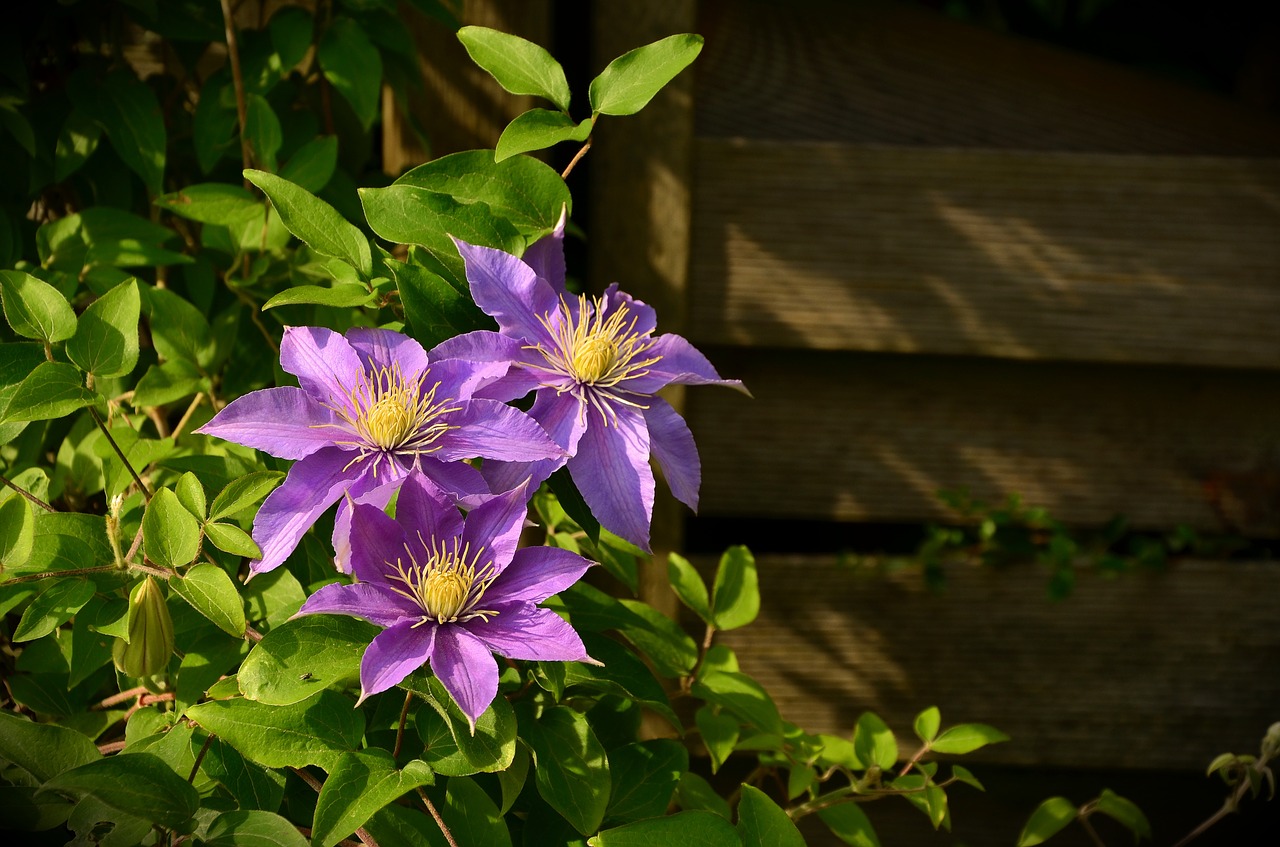The right time for when to transplant clematis is in spring, similar to when you’ll transplant lantana. The reason why spring is the ideal time for transplanting clematis is that it is around this time that the plant is waking up from winter. However, it’s worth noting that you don’t have to force transplanting in spring when the climate is scorching and dry.
You can keep your clematis healthy or start them from the greenhouse altogether, so they’ll be hardy enough for transplanting. You can also learn more about your clematis’ cultural specifics so that you can maintain the environmental conditions for them in the greenhouse. Below are tips on when and how to transplant clematis successfully to get the most of your long-lived perennials.

When To Transplant Clematis And Tips For Success
Spring vs fall
According to the University of Nebraska–Lincoln, the best time to transplant clematis is in spring. However, it would be best to note that you can avoid transplanting if the day is too hot and dry to prevent stress on the transplants. You can also transplant clematis in the fall when you noticed that new growth emerged on your plant.
Compared to transplanting in heat, the cool weather and the plant in dormancy will help lessen transplant shock risk. On the contrary, clematis that is actively growing may undergo shock easily due to stress. Keeping these facts in mind, one can conclude that you have a higher risk of failing when you immediately transplant after dormancy.
Still, spring would be the best choice, especially for newbie gardeners. If you have no choice but to do it in fall, make sure that the plants have enough time to settle in before winter. Never transplant clematis after October 1 to prevent drawbacks, and fall planting should be as early as possible.
How To Transplant Clematis
Upon marking your calendar, the next tip to guarantee success with your clematis transplants is knowing how to transplant them. Much like most transplants, the best way to help the clematis’ root system reestablish itself is by ensuring that the soil is moist. It’s also common for the clematis to take some time to recover upon transplantation because it can take further into the first season for the plant to settle in its new place.
Best location for transplanting clematis
More than maintaining soil moisture, what are the traits that make the best location for transplanting clematis? Clematis thrives in slightly alkaline soil that is also well-draining, so you can add limestone to amend the ground beforehand. The area should receive 6 hours of sun daily but also offers shade for the roots.
Afterward, dig a hole that is spacious enough for the roots of your transplant. You can then incorporate peat moss to improve this new location.
Transplant preparation
To ensure that your transplants won’t dry, you can fill a pail halfway with water and add a root stimulator. This will reduce transplant shock and help prevent problems until you’ve finished planting. You can also trim the transplants to be easier for them to focus on the root.
Fill the hole with soil after you placed the roots and check for air pockets. You should also plant clematis deeper if you’re using vines so that its crown and base shoots are protected by soil. Lastly, water your plants and give it time to adjust to the new location.
Supporting clematis
Being a vine, you should also know more about supporting clematis correctly. Otherwise, the plant will halt its growth and die. What materials will be great supports for clematis?
You can use steel rods or fishing line as support for the vine, but trellises and metal fences would be more convenient. Space your plants 3 feet apart so that they can grow comfortably. The many varieties of clematis should help you modify the space even if it is limited.
Common problems of clematis
The greenhouse offers protection against diseases like powdery mildew because you can prevent fluctuating conditions and maintain consistent management practices like watering. However, you should also know about the clematis wilt or leaf spot from fungi. You’ll notice dead stems and leaves, so remove the infected parts and properly dispose of them.
You can also control leaf spot with foliar sprays, and if you have two buds below the ground, you should see the plant growing back the next year. Do note that large-flowered hybrids are more at risk, especially those in the first year of growth. Lastly, the queen of vines is also susceptible to fungal stem rot, maintaining cleanliness to avoid infection.
Conclusion
Transplanting the queen of vines shouldn’t be stressful. If you’re unsure when to transplant clematis, simply mark your calendar in spring or early fall. Your go signal for transplanting will depend on the existing conditions of your region for these seasons.
Once you know when to transplant, choose a location that receives 6 hours of sunlight with well-draining and slightly alkaline soil. The hole should be spacious enough to accommodate the roots, and don’t forget to check for air pockets after planting. Clematis can take some time to adjust, so do no immediately get worried.
